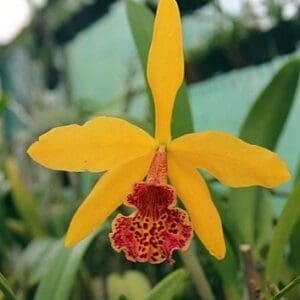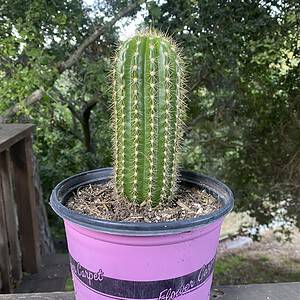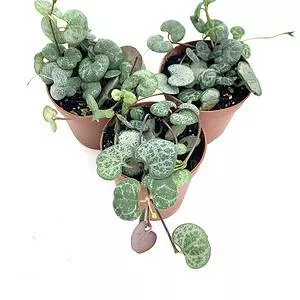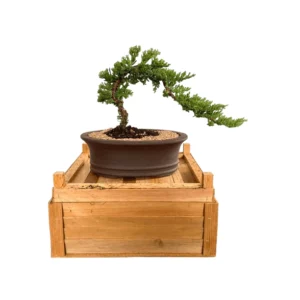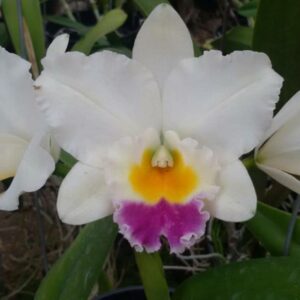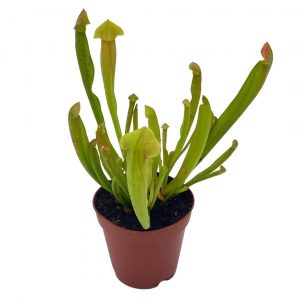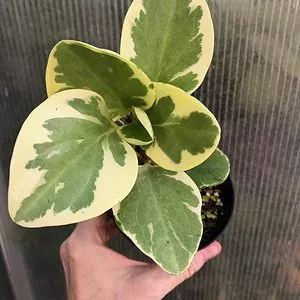No products in the cart.
Ivy plants are your classic climbing plant, famous as a groundcover, wall accent, or element in trellis, pergola, and arbor. Although recognized as a weed for its invasive tendencies, many gardeners continue to grow Ivy plants for their ornamental value.
There are different types of ivy plants you should know about that exist in the market. We’ll introduce each of them in this article.
Types of Ivy Plants You Can Grow Indoors or in Your Garden
Azores Ivy, Hedera azorica
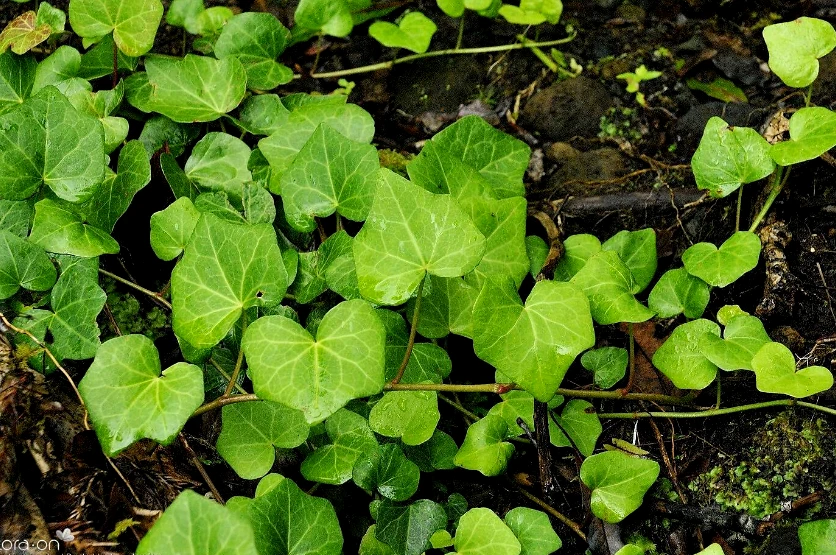
Azores Ivy got such a name because it’s native to the Atlantic coast in the Azores Islands. Botanically known as Hedera azorica, this species is an evergreen plant that can grow up to 66 to 98 ft (20 to 30 m) high. Azores Ivy can thrive. Hence, you shouldn’t let it climb on trees. It’s best to use it as a ground cover instead.
Plant Azores Ivy in partly sandy and mainly clayey soils, with a pH of 4.5 to 7.5. Provide regular watering as it requires moist soil, especially if the weather is hot. This plant survives a wide range of light conditions from deep shape to full sun.
Canary Island Ivy, Hedera canariensis
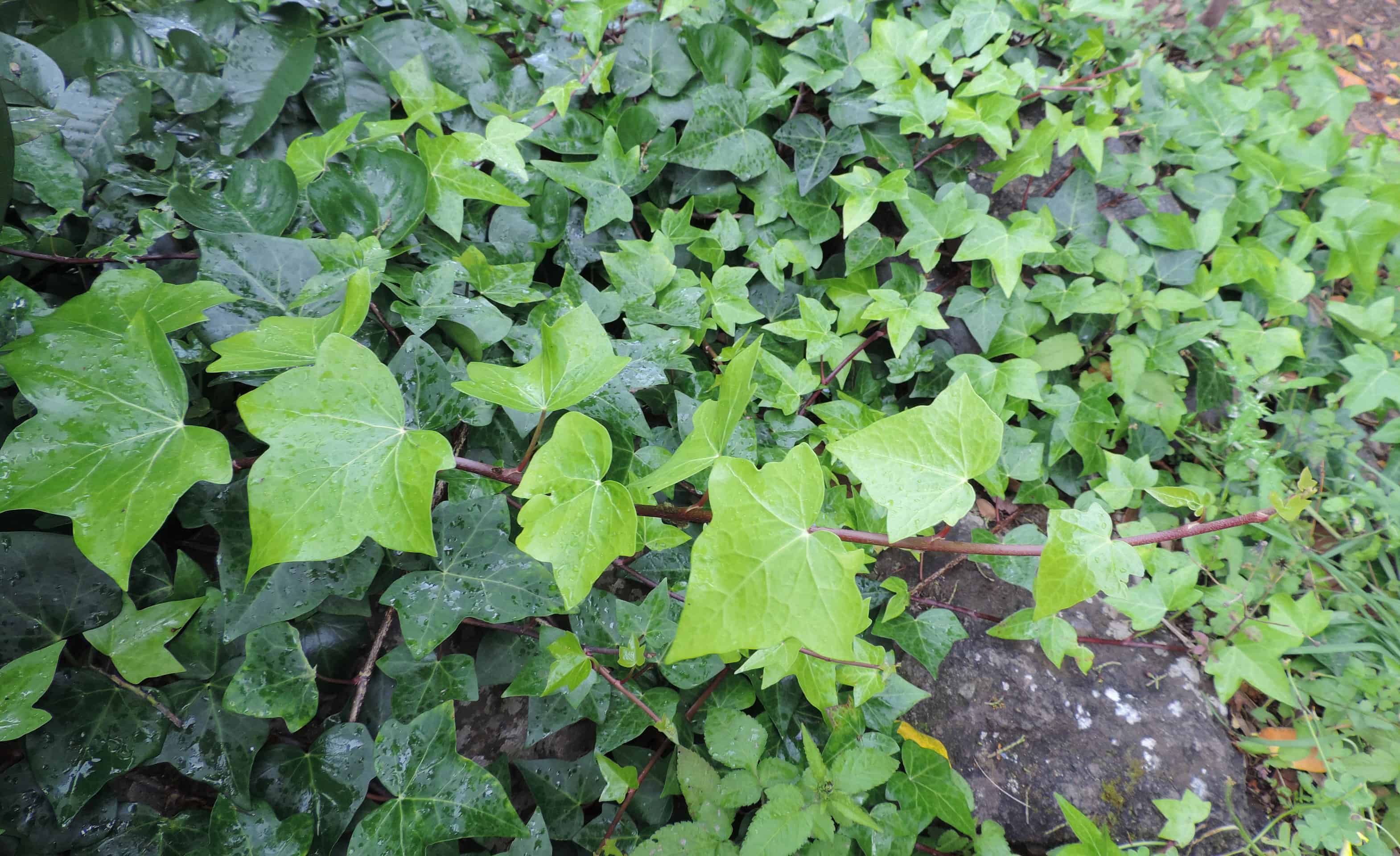
Canary Island Ivy is a lush and vibrant evergreen vine from the Canary Islands. It’s widely cherished for its ornamental appeal and ease of care. This variety boasts large, glossy, heart-shaped leaves that are dark green and have a slightly waxy texture.
The plant’s foliage forms dense mats or climbs surfaces with its aerial roots, making it a popular choice for ground cover and vertical growth.
Simplicity is the key when caring for Canary Island Ivy. This hardy plant prefers well-draining soil and should be watered moderately, allowing the top inch of the soil to dry out before the next watering. It can tolerate both full sun and partial shade, although it tends to do best in bright, indirect light.
Regular pruning can help maintain the plant’s desired shape and prevent it from becoming too unruly.
English Ivy, Hedera helix
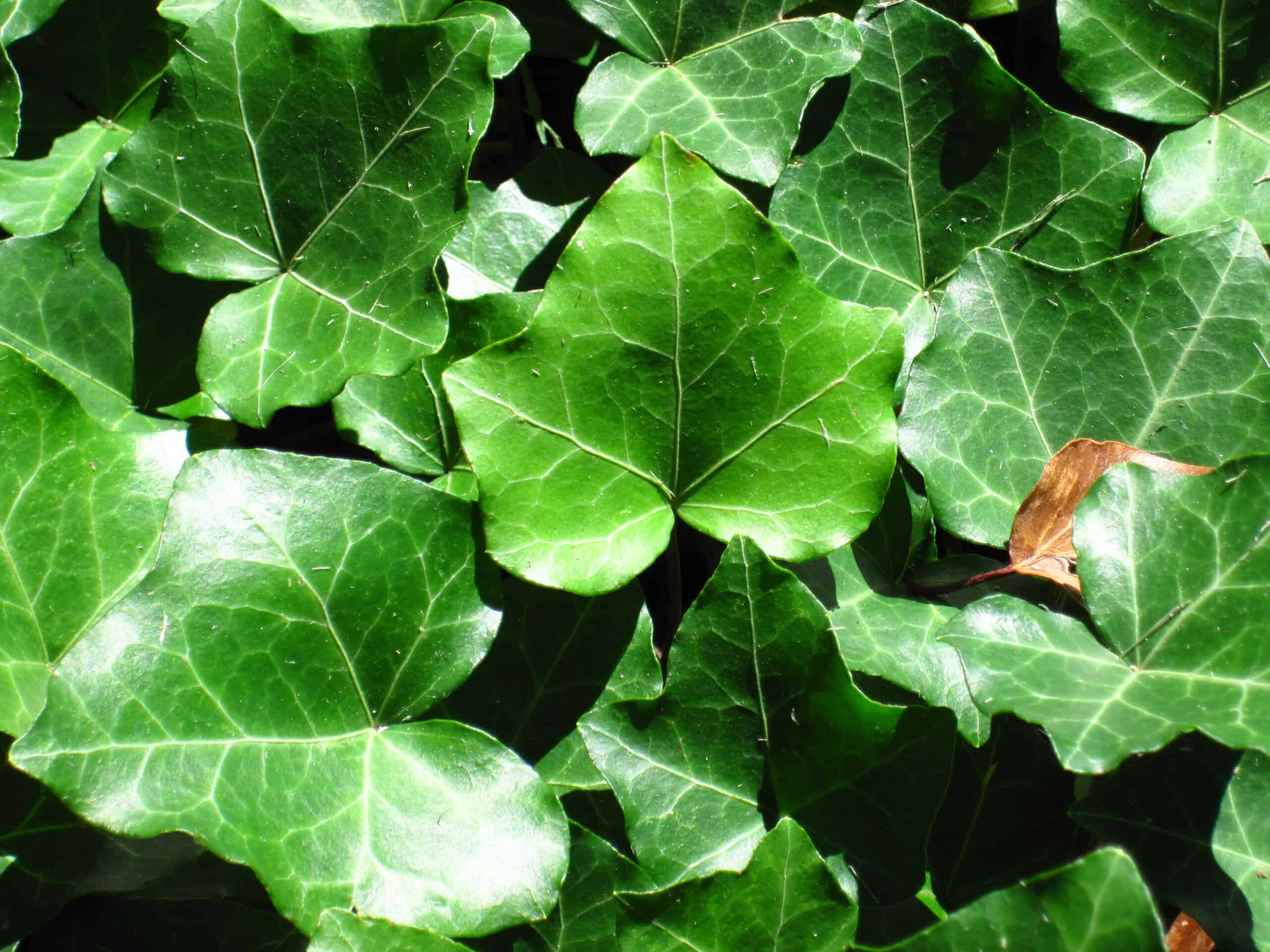
Next is the classic Hedera helix, or English Ivy, a timeless and beloved evergreen vine cherished for its elegance and versatility. Native to Europe and Western Asia, it has a rich history of adorning various landscapes and architectural features. English Ivy has distinctive, dark green, lobed leaves that take on various shapes and sizes, ranging from small and spiky to large and heart-shaped.
It’s a superb climber, using its aerial roots to ascend walls, trellises, and other structures. But it can also function as a ground cover in garden beds.
Caring for English Ivy is relatively straightforward and thrives in various conditions. This adaptable plant can handle full sun to partial shade. It prefers well-draining soil with regular watering.
Just be sure to let the soil dry slightly between waterings. Conduct occasional pruning to maintain its desired shape and to prevent it from becoming too invasive.
Gloire de Marengo Ivy, Hedera algeriensis
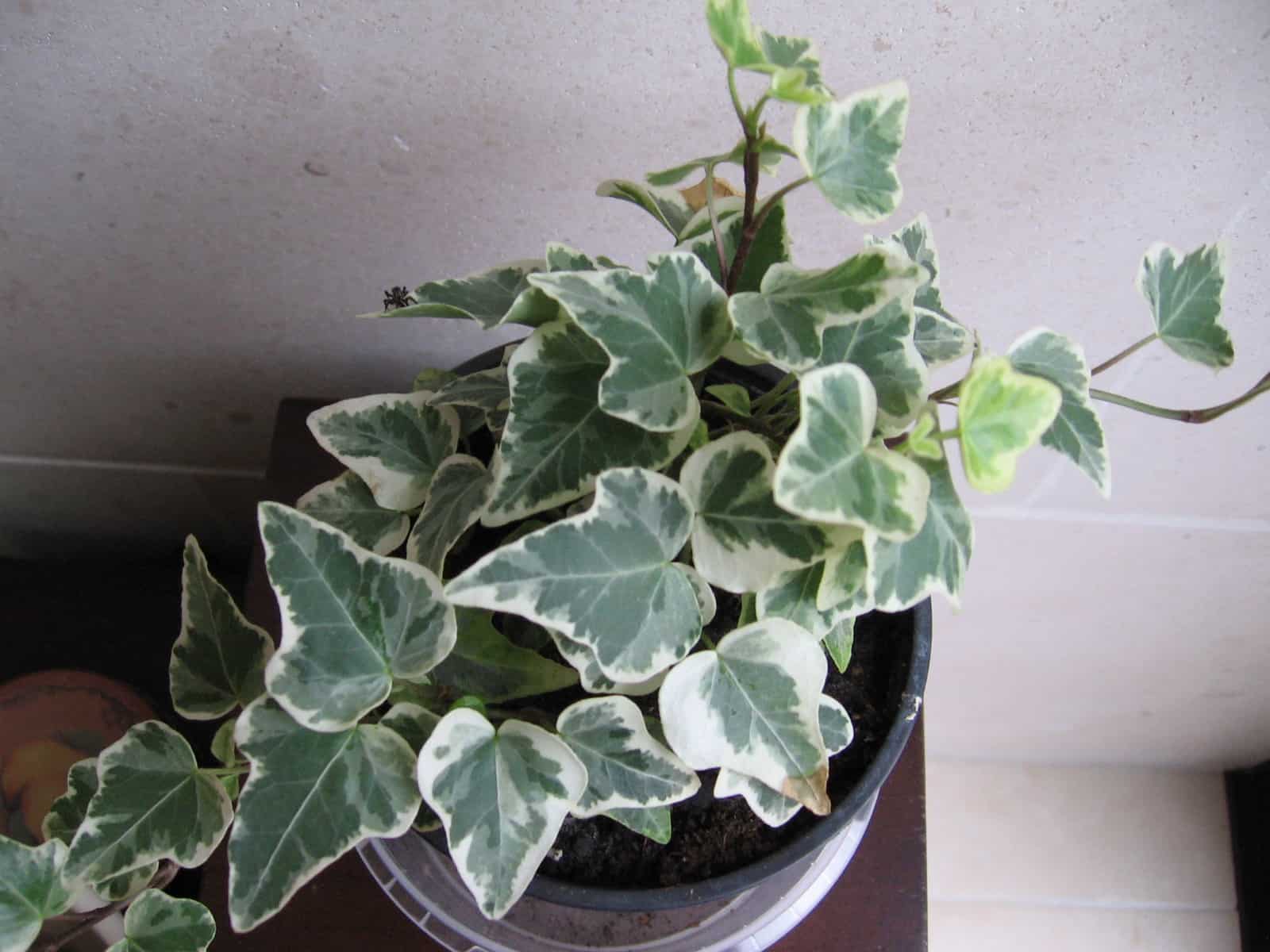
A striking and variegated ivy variety known for its eye-catching foliage is the Gloire de Marengo Ivy (Hedera algeriensis ‘Gloire de Marengo’). Its leaves are a striking blend of green, silver, and creamy white, creating a visually captivating display. This ivy’s leaves are typically larger than traditional Algerian ivy ones, offering an even more vibrant ornamental effect.
Gloire de Marengo Ivy is an adaptable and robust plant that can thrive indoors and outdoors. To care for this ivy, provide well-draining soil and maintain moderate moisture, allowing the top layer to dry between waterings. Regular pruning can help shape the plant and encourage bushier growth, ensuring it remains a stunning addition to your garden or living space.
Ground ivy, Glechoma hederacea

Glechoma hederacea, commonly known as Ground Ivy or Creeping Charlie, is a low-growing and hardy perennial plant often regarded as an invasive weed but appreciated by some for its distinctive, kidney-shaped leaves and tiny, tubular violet-blue flowers. When crushed, this groundcover plant has scalloped, opposite leaves with a mild minty aroma.
Ground Ivy thrives in shaded and moist areas, making it a natural choice for under trees, alongside garden paths, or as a ground cover in shaded gardens. Primary care for Ground Ivy involves regular watering, especially during dry spells. Pruning or mowing can help keep it in check while preserving its charming presence in the garden.
-
$24.99Sold By: BubbleBlooms
$29.99In stock
Fern Variety Assortment, 6 different Fern plants, in 2 inch pots, Super cute, best gift, plant collection set, variety bundle
Rated 4.81 out of 5 based on 279 customer ratings00Sold By: BubbleBlooms -
Free Shipping$34.99Sold By: Aloha Hawaii Orchids
$39.99In stock
Orchid Cattleya Blc Copper Queen Plant Comes in 2″ Pot
Rated 4.65 out of 5 based on 268 customer ratings01Sold By: Aloha Hawaii Orchids -
Free Shipping$22.00Sold By: Earthling Botanical
$35.00In stock
Trichocereus Grandiflorus Live Rooted Cactus 8”
Rated 5.00 out of 5 based on 34 customer ratings00Sold By: Earthling Botanical -
Free Shipping$29.99Sold By: Trees Again Nursery
In stock
TreesAgain Osage Orange Tree – Maclura pomifera – 3 starter plugs
Sold By: Trees Again Nursery
Cyprus Ivy, Hedera cypria
Cyprus Ivy is native to the island of Cyprus. It’s one of the evergreen climbing ivy plants with distinct juvenile and adult life stages. During the juvenile stage, Cyprus Ivy will exhibit herbaceous growth and have a lobed leaf shape. They spread out densely into the ground until they come across a host structure like walls, tree trunks, or fence.
By then, the Cyprus Ivy will develop woody vines while the leaves will become unlobed.
Cyprus ivy is a woody, evergreen, climbing, or ground-creeping vine of the genus Hedera family Araliaceae. Like other members within the genus, this plant has distinctive juvenile and adult life stages. In the juvenile stage, the plant will have characteristically lobed leaves and exhibit herbaceous growth to form dense patches on the ground.
The transition from juvenile to adult is triggered by climbing a host structure, such as a fence, wall, or tree. At this point, the plant will develop woody vines, the leaves will transition from lobed to unlobed and the plant will eventually begin to produce umbels of tiny flowers on secondary branches.
Algerian Ivy, Hedera algeriensis
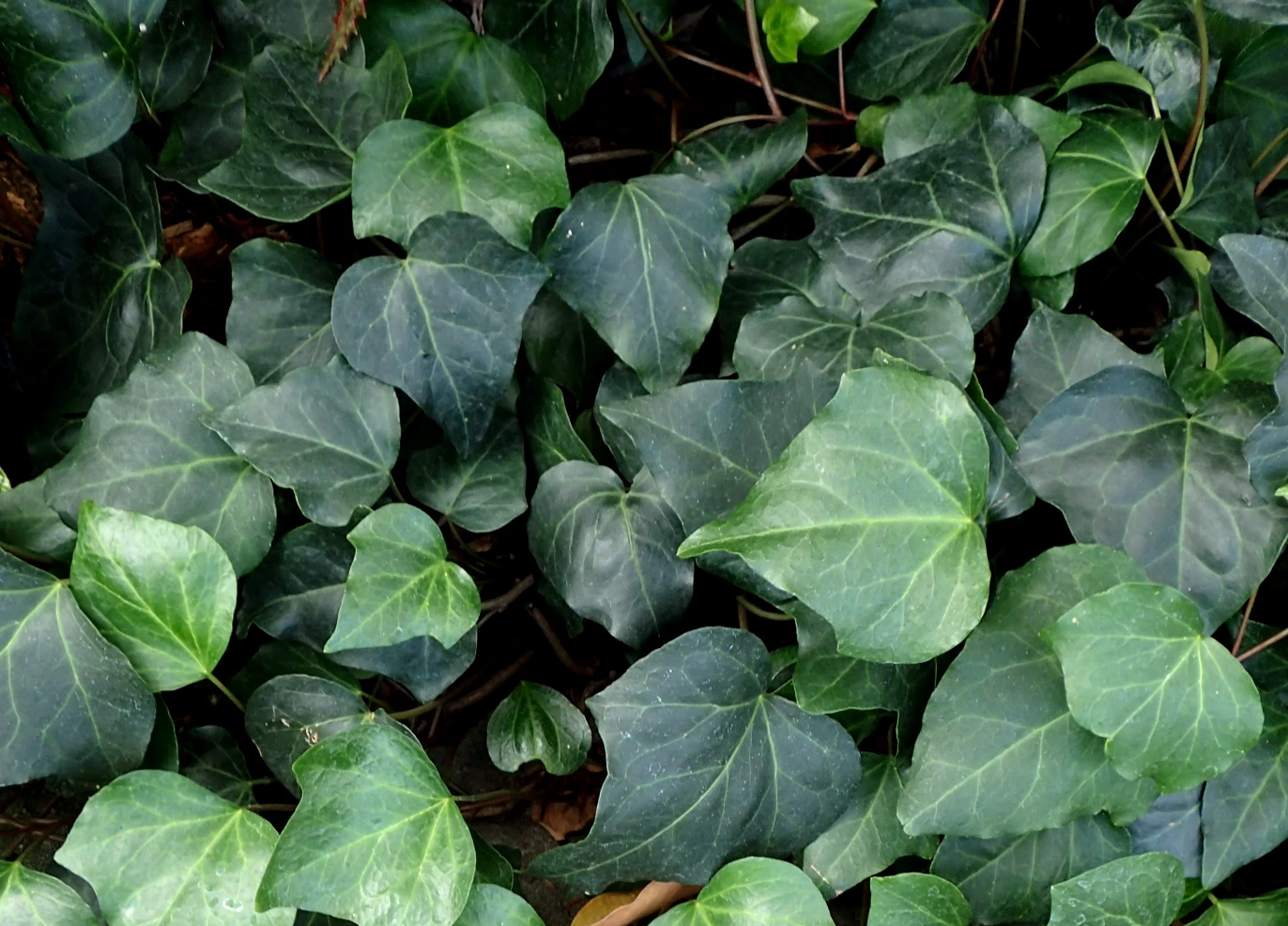
Hedera Algeriensis, commonly known as Algerian Ivy, is a versatile and attractive evergreen vine celebrated for its lush foliage and adaptability. This ivy species is native to North Africa and thrives in various environmental conditions. Algerian Ivy is known for its large, leathery, dark green leaves with a glossy finish, making it a visually appealing addition to indoor and outdoor spaces.
The leaves are usually five-lobed, creating an elegant and intricate texture that adds to its ornamental charm. As a vine, it can easily climb surfaces using its aerial roots or be left to cascade gracefully from hanging containers.
Taking care of Algerian Ivy is relatively straightforward. It thrives in well-draining soil and is adaptable to various light conditions, making it suitable for full sun and partial shade. While it can tolerate some drought, keeping the soil consistently moist but not waterlogged is best.
Pruning helps maintain the plant’s desired shape and encourages healthy growth. Algerian Ivy is an excellent choice for those seeking a low-maintenance, decorative plant that can flourish in different settings, whether used as a ground cover, wall climber, or potted indoor houseplant. Its aesthetic appeal and adaptability make it an excellent addition to any garden or interior space, offering a touch of lush greenery and elegance.
Cape Ivy, Senecio mikanioides

Cape Ivy is a versatile and resilient trailing vine celebrated for its glossy, lobed leaves and vigorous growth. Perfect for indoor and outdoor settings, this low-maintenance plant adds a touch of greenery with its cascading foliage. Incorporating Cape Ivy into your home or garden is a delightful way to enjoy a touch of greenery with minimal effort.
Its adaptability and undemanding nature make it an excellent choice for novice and experienced plant enthusiasts.
This thrives in bright, indirect light but can tolerate some shade. Avoid exposing it to direct sunlight for extended periods, especially during the hottest part of the day. Keep the soil consistently moist but not waterlogged.
Well-draining, nutrient-rich soil is ideal for Cape Ivy. Ensure the container has drainage holes to prevent waterlogging. Cape Ivy prefers moderate temperatures between 60-75°F (15-24°C). It adapts well to average indoor humidity levels, making it suitable for various climates.
Boston Ivy, Parthenocissus tricuspidata

Parthenocissus tricuspidata, commonly known as Boston Ivy or Japanese Creeper, is a deciduous woody vine with vigorous climbing and vibrant autumn foliage. Native to East Asia, this ornamental plant is widely cultivated for its aesthetic appeal. Characterized by its distinctive three-lobed leaves and adhesive tendrils that enable it to cling to various surfaces, Boston Ivy is often used to adorn walls, fences, and buildings.
Its lush green foliage forms a dense cover during the growing season, providing beauty and insulation. As autumn approaches, the leaves undergo a spectacular transformation, turning shades of brilliant red, orange, and purple, enhancing the visual allure of landscapes.
This resilient deciduous vine thrives in well-drained soil with slightly acidic to neutral pH levels. Planting in a location with full to partial sun promotes vigorous growth and vibrant fall colors. Regular watering is essential to moisten the soil, especially during dry periods.
Mulching around the base helps retain moisture and suppress weeds. Prune in late winter or early spring to control size and shape and remove damaged or dead growth. While Boston Ivy is generally low-maintenance, occasional fertilization in the spring with a balanced, slow-release fertilizer can support healthy development.
Monitoring pests and diseases is essential, though this vine is relatively resistant.
German Ivy, Delairea odorata

Despite its name, German Ivy is not a true ivy but a member of the Asteraceae family. Native to South Africa, this vigorous vine features glossy, rounded leaves with a distinct scalloped edge, creating a dense carpet of greenery. It is a fast-growing evergreen vine appreciated for its lush, cascading foliage and adaptability to various conditions.
It’s commonly cultivated as a trailing or climbing plant, making it a popular choice for hanging baskets, containers, or ground cover. With its attractive foliage and ease of care, German Ivy is a versatile and charming addition to indoor and outdoor settings.
German Ivy prefers bright, indirect light and well-draining soil. It’s relatively low-maintenance, requiring regular watering to moisten the soil. It thrives in bright, indirect light, such as indoor spaces near windows or outdoor areas with partial sun. Occasional pruning will help maintain its shape.
Persian Ivy or Bullock’s Heart Ivy, Hedera colchica “Dendroides”
Hedera colchica “Dendroides” is a distinctive cultivar of Persian Ivy, prized for its unique and ornamental characteristics. This evergreen climbing vine, native to the Caucasus region, stands out for its large, glossy, deeply lobed bright green leaves. “Dendroides” earns its name from the dendritic or tree-like appearance of its branching pattern, creating a dense and lush cover when allowed to climb.
With a vigorous growth habit, it can quickly scale walls, fences, or arbors, providing both aesthetic appeal and potential ground cover.
Thriving in partial to full shade, this cultivar is adaptable to various soil types but prefers well-drained and moderately fertile conditions. Regular pruning helps maintain its shape and control its spread. “Dendroides” adds an elegant and visually striking element to gardens or landscapes, particularly in shaded areas where its bold foliage can shine.
Persian Ivy, Hedera colchica

Persian Ivy is a robust evergreen climbing ivy celebrated for its vigorous growth and large, glossy leaves. Native to the Caucasus region, this hardy ivy species exhibits a bold and striking appearance, with heart-shaped or lobed foliage that can measure several inches across.
Colchis Ivy is highly adaptable, thriving in various soil types and light conditions, from full sun to deep shade. Its climbing nature makes it an excellent choice for covering walls, fences, or arbors, providing both ornamental value and potential ground cover. Regular pruning helps maintain its shape and manage its growth.
Goldchild ivy (a variety of English ivy)
A captivating cultivar of English Ivy prized for its striking foliage; the Goldchild Ivy is an evergreen plant that features glossy foliage with a prominent central splash of banana-yellow edges. Such creates a vibrant and eye-catching display. The variegated pattern contrasts beautifully with the deep green color of the surrounding foliage.
Goldchild Ivy is adaptable and will do well as an outdoor or indoor plant. It thrives in well-draining soil and can tolerate various light conditions, from partial shade to full sun. During a growing season, fertilize the ivy vine with a balanced, all-purpose fertilizer to maintain its lush growth.
Russian Ivy, Hedera pastuchovii
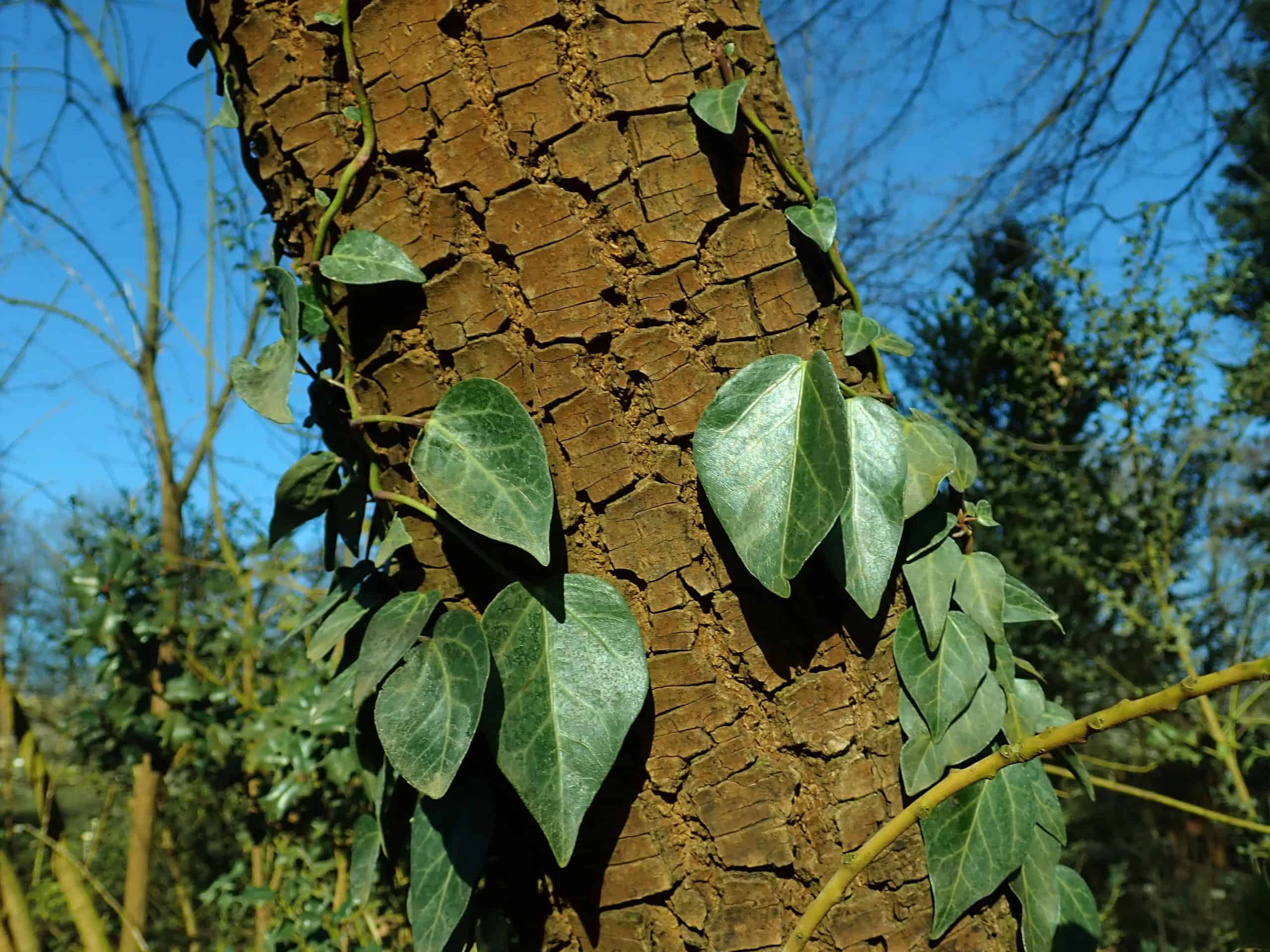
Another species of the Hedera genus, the Russian Ivy (Hedera pastuchovii) is named after the Russian-dominated area of Transcaucasia. This plant is an evergreen woody climber that attaches its aerial rootlets to surfaces. It exhibits dark green, leathery leaves with a unique, almost quilted texture.
Russian Ivy is also a flowering plant, producing brilliant greenish-yellow flowers from August to October. Unlike most ivy plants, this species won’t thrive as a groundcover, so make sure you have tree trunks, fences, or trellises set up if you wish to plant it.
Plant this ivy in locations that receive partial to full sun. The planting substrate must have a sandy, gritty, or sandy loam texture. It also needs to be consistently moist. Russian Ivy is hardy and can tolerate temperatures as low as -18 °C, making it suitable in USDA Zones 4a to 7b areas.
Moroccan Ivy, Hedera maroccana
By its name, you’ll instantly know that Moroccan Ivy is native to Morocco. It’s characterized by having glossy leaves with light to rich green color. This ivy has an elliptic leaf shape attached to reddish stalks or stems.
Moroccan Ivy can grow up to 16 ft (5 m) tall when vertical surfaces are available to climb on. This ivy vine can also grow as a groundcover.
Moroccan Ivy grows in loam, sand, or clay soils as long as it has good drainage. Keep the soil moist through regular watering and ensure it receives partial shade to full sunlight. Trim leggy parts to maintain the size and shape of the plant ivy.
Pests such as spider mites, scale insects, and aphids can be problematic for Moroccan Ivy, so regular inspection is needed. Honey fungus and leaf spots are common diseases, so maintain good air circulation in your garden.
Japanese Ivy, Hedera rhombea
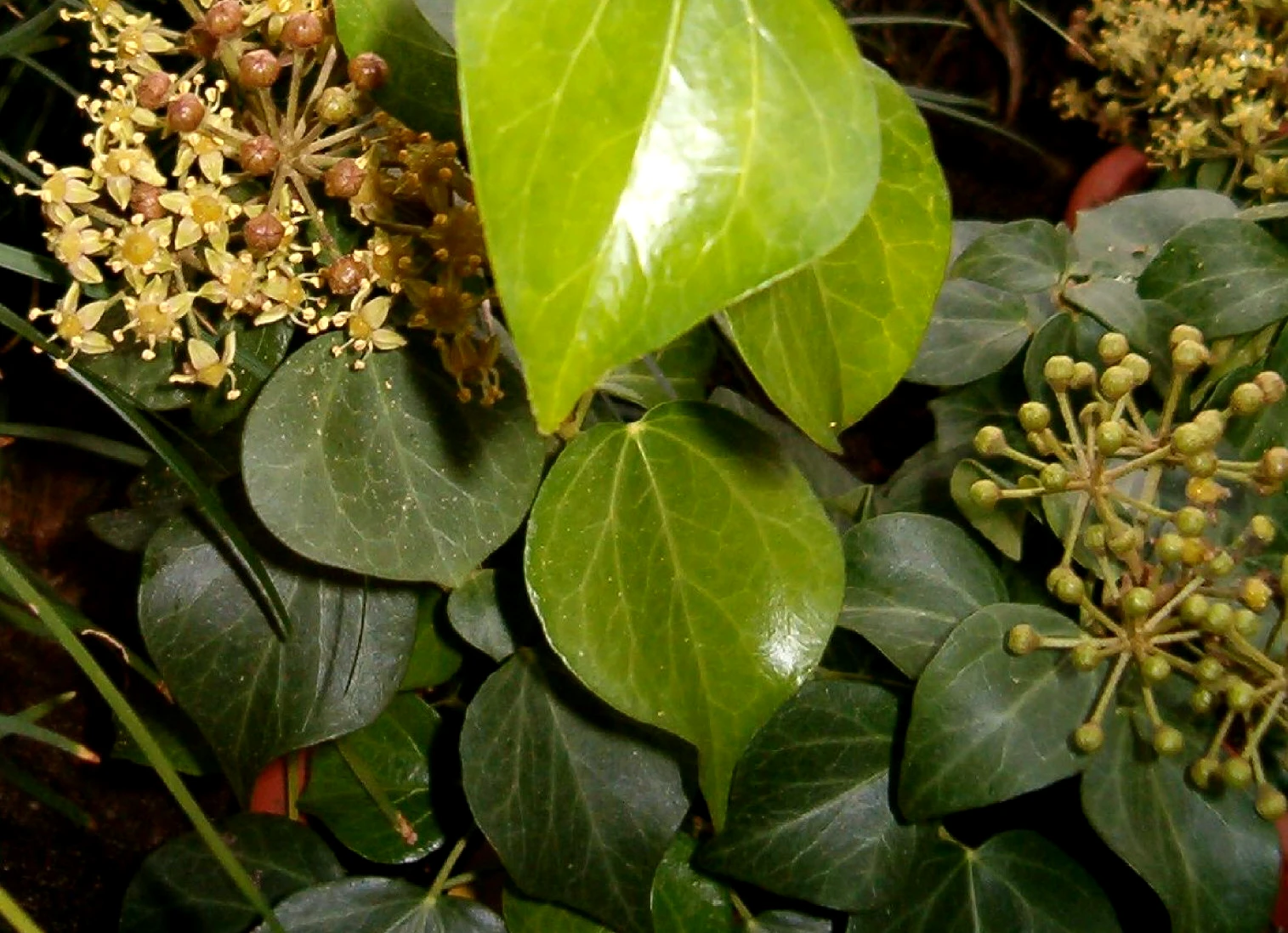
The Japanese Ivy is native to East Asia. It is another climbing vine that thrives well in walls, trees, and cliffs but can also grow on the ground as a creeping ivy plant. The leaves of Japanese Ivy are green with white variegations attached to purple-red stems.
It’s a perennial plant species that has a rapid growth rate. Japanese Ivy also produces flowers, but they are insignificant.
If you live in USDA zones 8a to 9b, you can grow Japanese Ivy without trouble. Plant it in a location with partial to full sunlight, ensuring the plant receives 6 hours of light. Water the soil every week when the top inch is dry.
If potted or in a hanging basket, ensure the container drains the excess water to avoid root rot.
Irish Ivy, Hedera hibernica
Irish Ivy refers to Hedera hibernica, a type of ivy native to Ireland and other parts of Western Europe. This evergreen climbing plant is a close relative of the common ivy (Hedera helix) and shares similar characteristics. Irish Ivy features glossy, dark green leaves that are bigger and wider than English ivy.
Instead of white veins, Irish Ivy possesses shiny green veins on its leaves.
It is valued for its ornamental qualities and adaptability to light conditions, including shade. Like other ivies, Irish Ivy requires well-draining soil, moderate watering, and regular pruning to control its growth. It’s often chosen for its hardiness and the attractive greenery it brings to any outdoor garden.
Himalayan Ivy, Hedera nepalensis

The natural habitat of Himalayan Ivy is in the Himalayas, hence its common name. Sometimes, this species is also referred to as the Nepalese Ivy. It’s a woody perennial evergreen plant characterized by having gray-green leaves that are leathery in texture.
As a climbing ivy, this species can grow a height of 10 to 50 ft (3 to 15 m) and a spread of 20 to 50 ft (6 to 15 cm). Himalayan flowers are a little showy with a greenish-white hue compared to other ivy varieties.
The plant grows in areas under USDA zones 7 to 10. It prefers a location with part sun to full shade light conditions. Himalayan Ivy will do well with moderate watering and can tolerate drought once established.
Pests and diseases aren’t a problem for this species, but regular inspection will help prevent such troubles. All parts of Himalayan ivy are poisonous, so make sure not to ingest them.
Bettina Ivy
While most ivy varieties are rapid growers and are meant for outdoors, Bettina Ivy comes more compact. Bettina Ivy is your perfect indoor ivy plant. It’s a variegated ivy where the dark green foliage features cream and white borders.
Because of its low-growing and spreading habit, Bettina Ivy is best planted in hanging baskets.
Ensure that this plant receives full sun to make it happy. Nevertheless, it can also withstand poor conditions such as full shade. Keep the soil moist and don’t allow it to go dry completely.
Adding mulch around the root zone will prevent rapid moisture loss and protect the roots from winter.
Iberian Ivy, Hedera iberica
Iberian Ivy is a climbing perennial shrub or bush with aerial rootlets. The leaves are broad and leathery, attached to green or brown stems. Depending on how you intend to grow it, it can be a climbing vine or groundcover.
This vine grows up to 66 to 98 ft (20 to 30 m) high when attached to vertical spaces.
Different light conditions, including partial shade, will be suited to Iberian Ivy. To ensure optimal growth, plant it in well-draining soil and maintain consistent moisture without allowing the soil to become waterlogged. Regularly prune to control overgrowth.
Iberian Ivy is generally resistant to pests and diseases, but monitoring for any issues and providing good air circulation can contribute to its overall health.
-
Free Shipping$275.75Sold By: BONSAI WORLD LLC
In stock
Chinese Flowering White Serissa Bonsai Tree of a Thousand Stars
Only 1 available and it’s in 1 people’s basketSold By: BONSAI WORLD LLC -
$6.95Sold By: CTS Air Plants
In stock
String of Hearts Ceropegia Woodii
Only 89 available and it’s in 2 people’s basketSold By: CTS Air Plants -
Free Shipping$72.60Sold By: BONSAI WORLD LLC
Only 1 left in stock
Beginner traditional Juniper bonsai tree
Sold By: BONSAI WORLD LLC -
Free Shipping$34.99Sold By: Aloha Hawaii Orchids
$39.99In stock
Cattleya orchid Rlc Shinfong ‘little boy’ Comes in 2″ Pot
Rated 4.65 out of 5 based on 268 customer ratings00Sold By: Aloha Hawaii Orchids
Which ones of these ivy plants will you pick?
There are different types of ivy, and you must choose one that suits your area’s climate. Take note of the plant’s characteristics and see if they match your preferences. It’s also good to check if a particular ivy species is allowed by your local government for cultivation.
Remember that this plant has invasive tendencies and might be prohibited in your area.
Ivy facts, Uses, Problems, and Dangers
There are many kinds of ivy plants. Ivy is an evergreen shrub renowned for soaring growth and crawling on almost any surface. It’s also an adaptable plant that thrives in varying climates.
Gardening uses ivy, which allows it to be planted on any surface. Ivys are used as cover plants due to their ability to climb. Approximately 15 types exist – including pure ivy plants – but some other plants are also found.
There is nothing as simple as planting ivy in the ground.
However, ivies can present challenges such as invasive tendencies, potential building damage, and the need for consistent maintenance. Additionally, some species, like English Ivy, are toxic if ingested and may cause skin irritation, necessitating caution, especially in households with children or pets.
Despite these considerations, with proper care and monitoring, ivies can be valuable additions to outdoor spaces, contributing to visual beauty and ecological functions.
How do you care for types of indoor ivy houseplants?
Ivy houseplants should have access to daylight, partial sun, or full sunlight. Keep the soil moist through regular watering, but ensure the soil doesn’t turn soggy. Since indoor space is limited, you’ll need to prune more frequently to manage the plant’s size.
Provide a sturdy stake or trellis to support the vines.
How do you treat ivy plants against pests?
Spider mites are a prevalent pest in any ivy plant. Fortunately, you can deal with mite problems quickly. Simple daily water sprays can prevent spider mite nests from growing on plants.
Avoid chemical pesticides. Alternatively, a natural mixture does the same work as natural products.
Whether you want to buy, sell, or reach out to other plant enthusiasts, Plantly is the right place to be!
-
Free Shipping$10.00Sold By: Sam's Curious Cultivars
In stock
Donkey’s Tail Succulent, Sedum Morganianum, 2-3in, well rooted
Only 4 available and it’s in 1 people’s basketSold By: Sam's Curious Cultivars -
$11.99Sold By: BubbleBlooms
$14.99In stock
Sweet Pitcher Plant, Carnivorous Plant, Sarracenia rubra Walter pitcherplant
Only 77 available and it’s in 4 people’s basketRated 4.81 out of 5 based on 279 customer ratings00Sold By: BubbleBlooms -
$39.99Sold By: Succulent Oasis
In stock
Succulent Plant Medium Euphorbia Obessa Hybrid
Rated 4.84 out of 5 based on 352 customer ratings00Sold By: Succulent Oasis -
$13.95Sold By: SunSoul Plants
$17.95In stock
Peperomia Obtusifolia Variegata in 3″ pot
Rated 4.87 out of 5 based on 98 customer ratings00Sold By: SunSoul Plants

